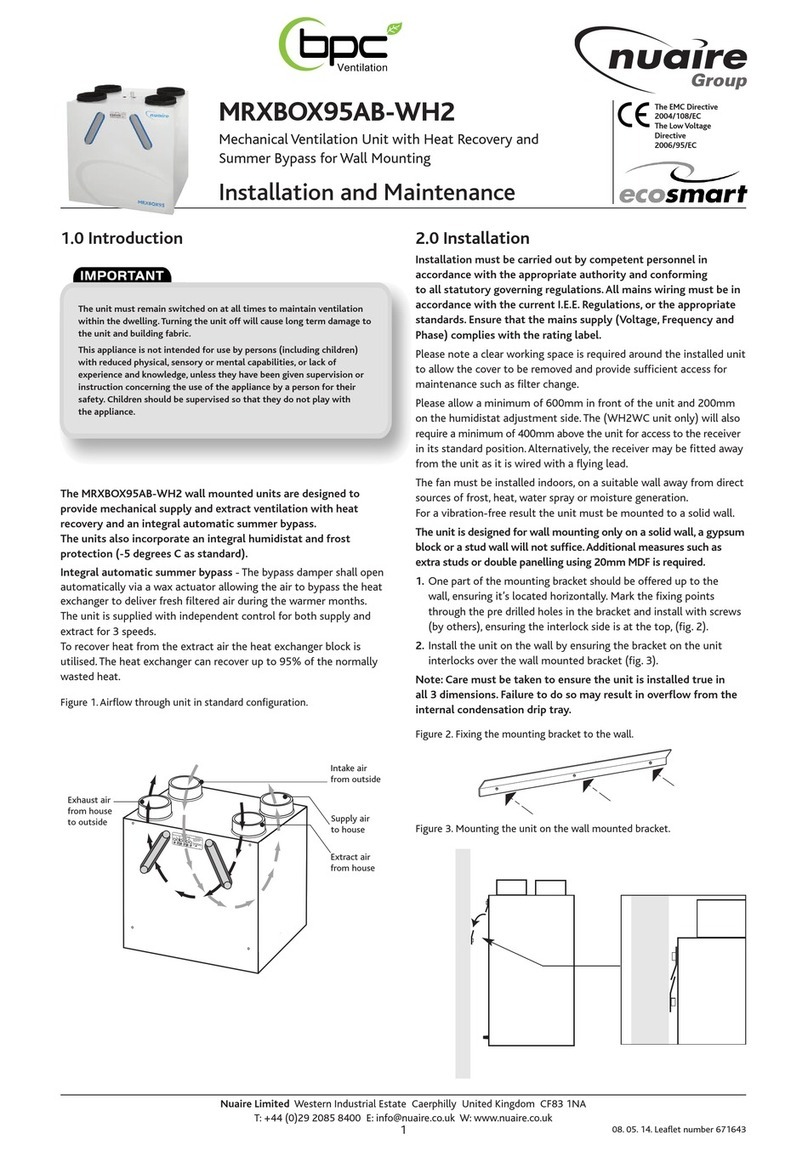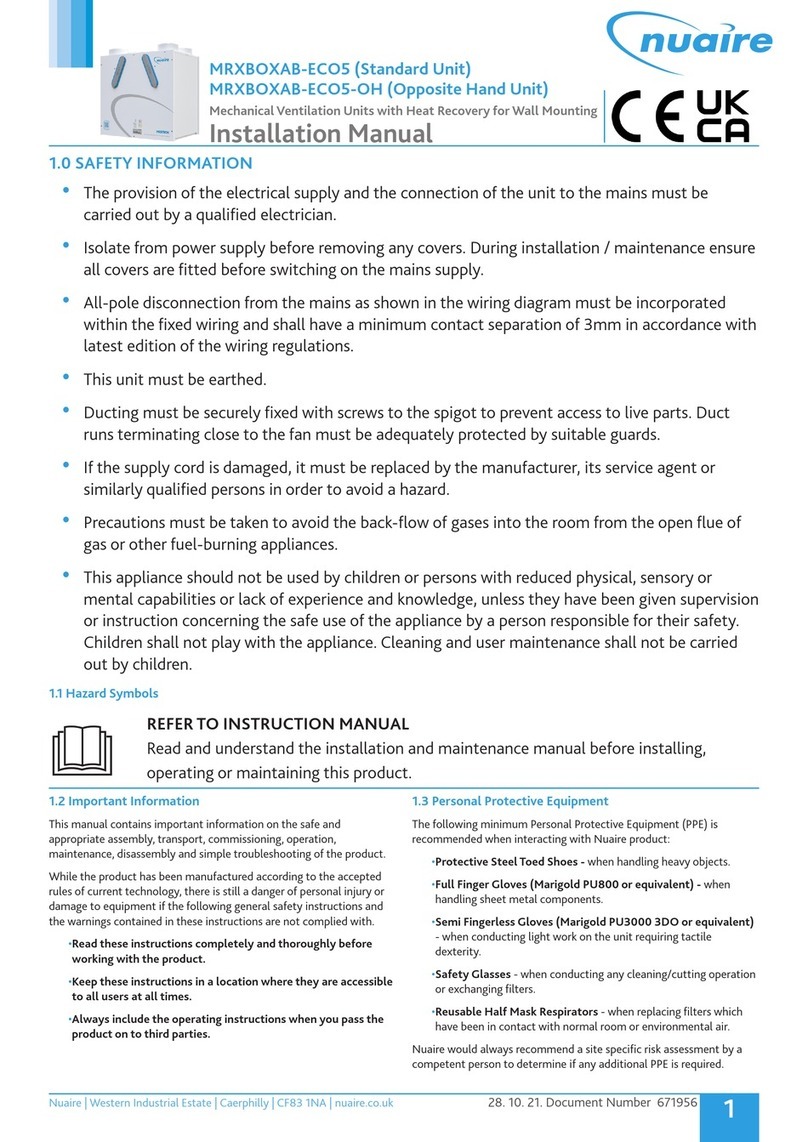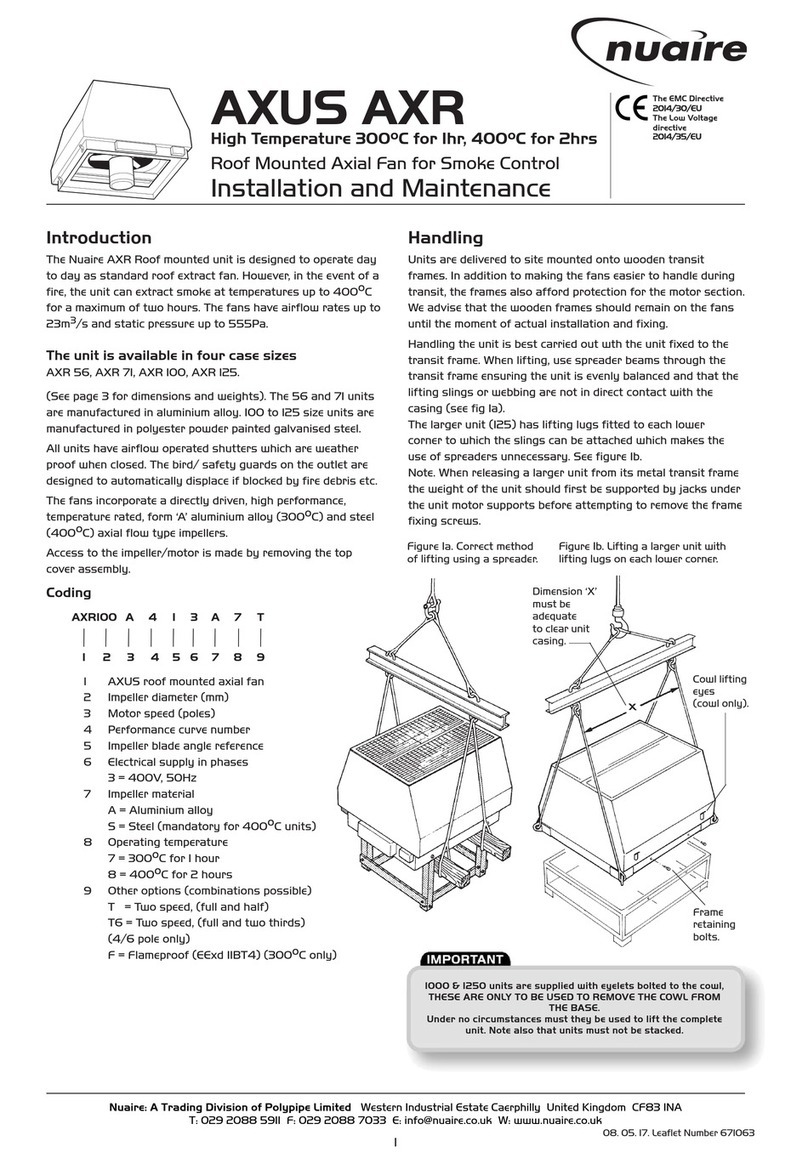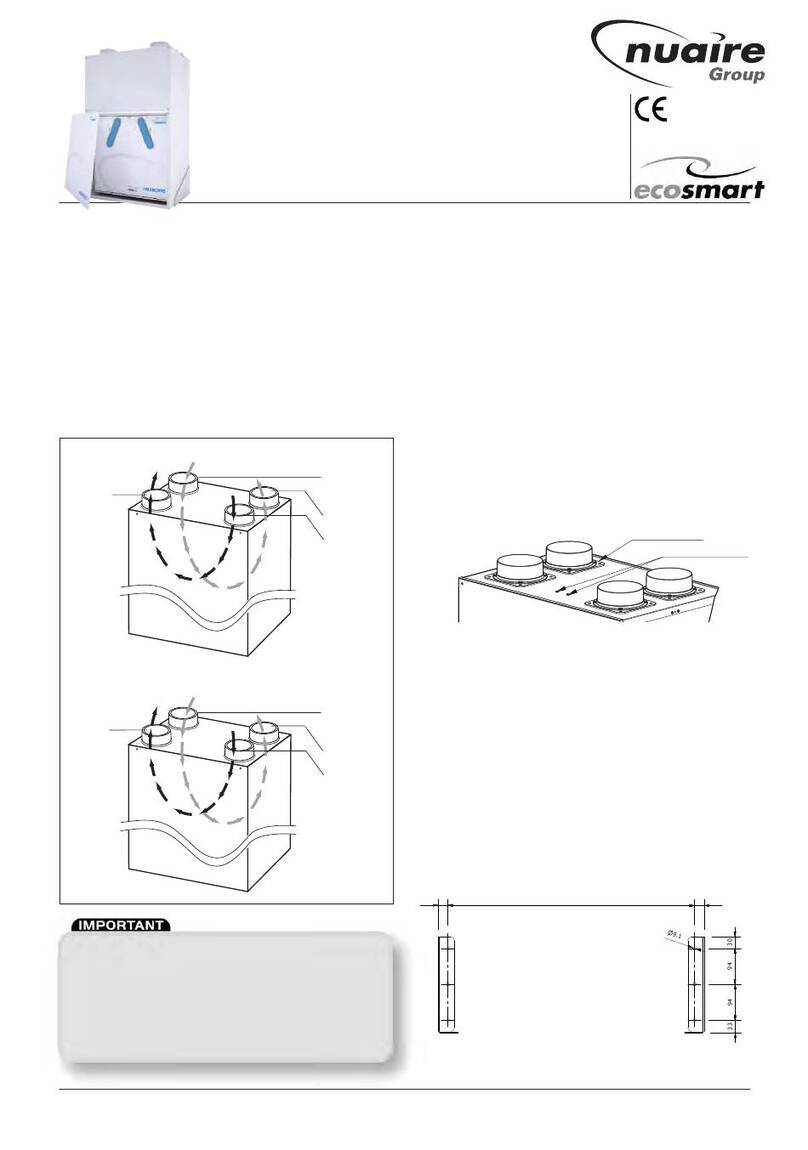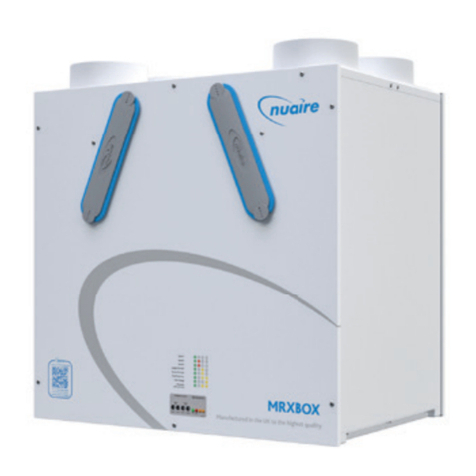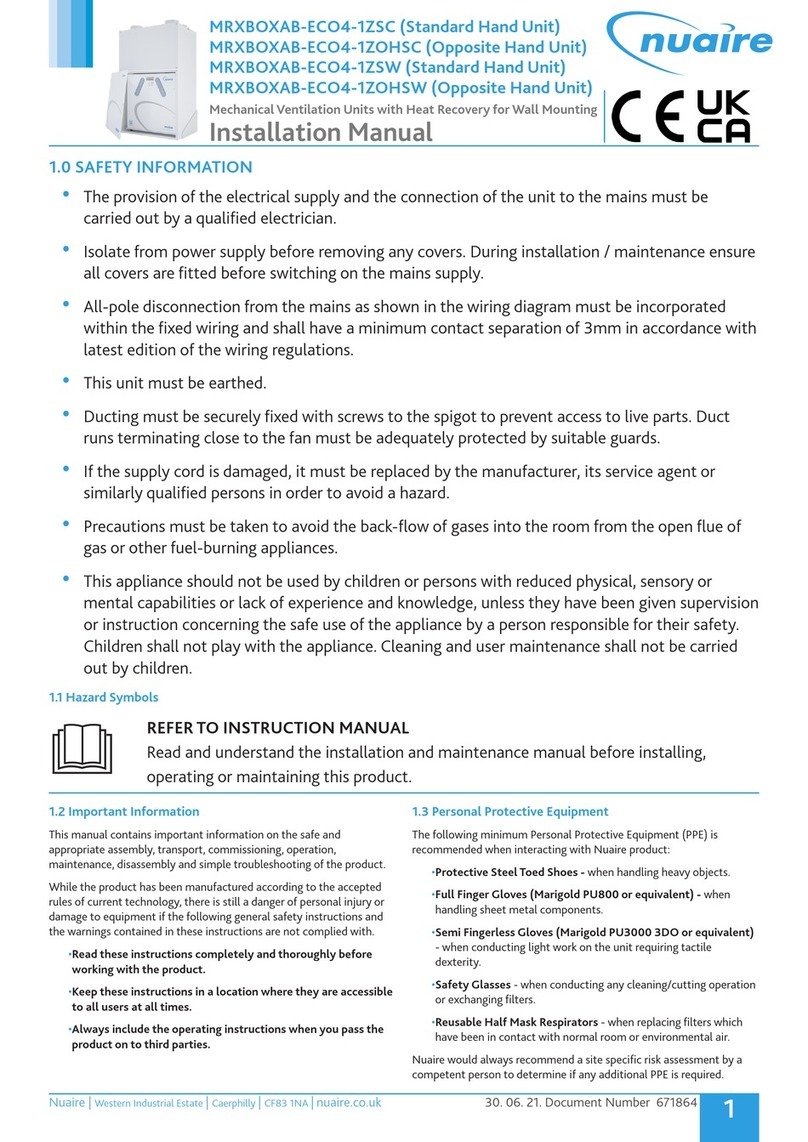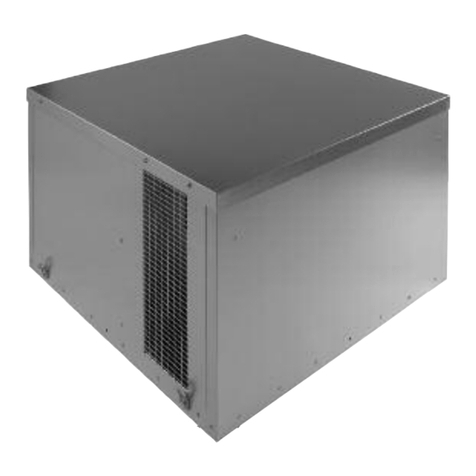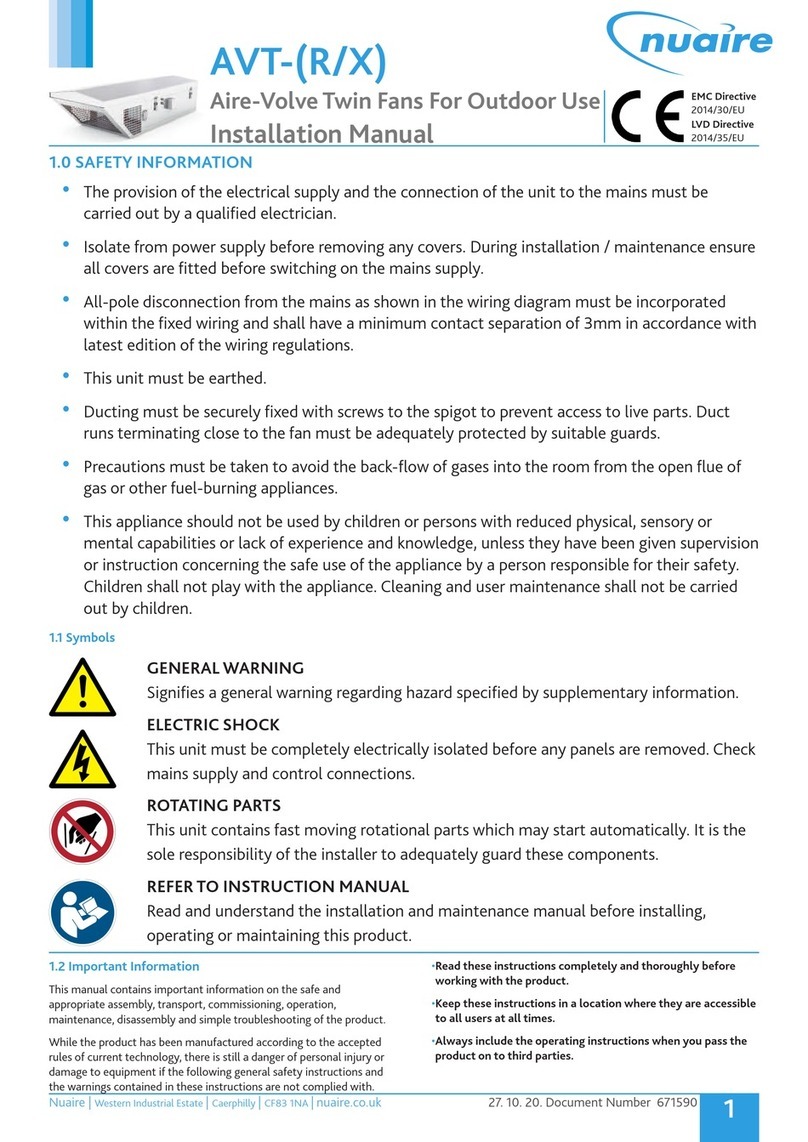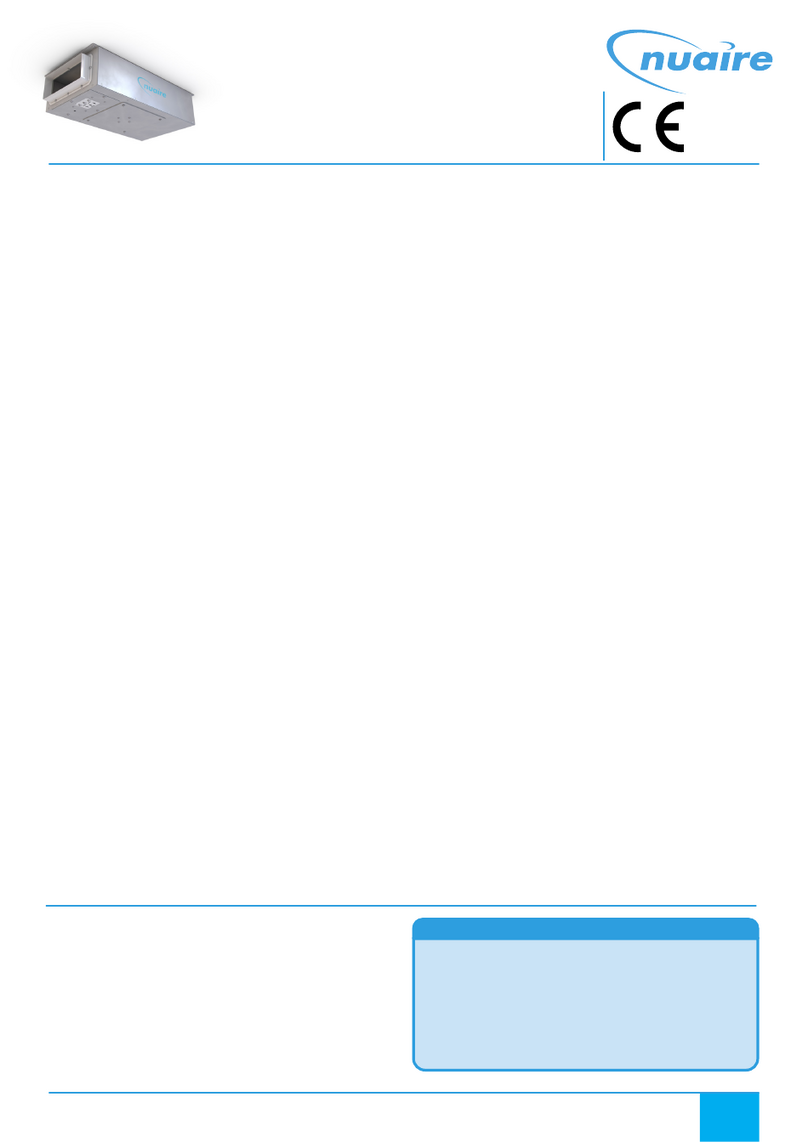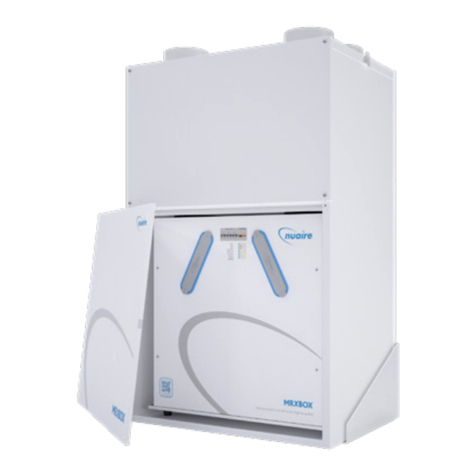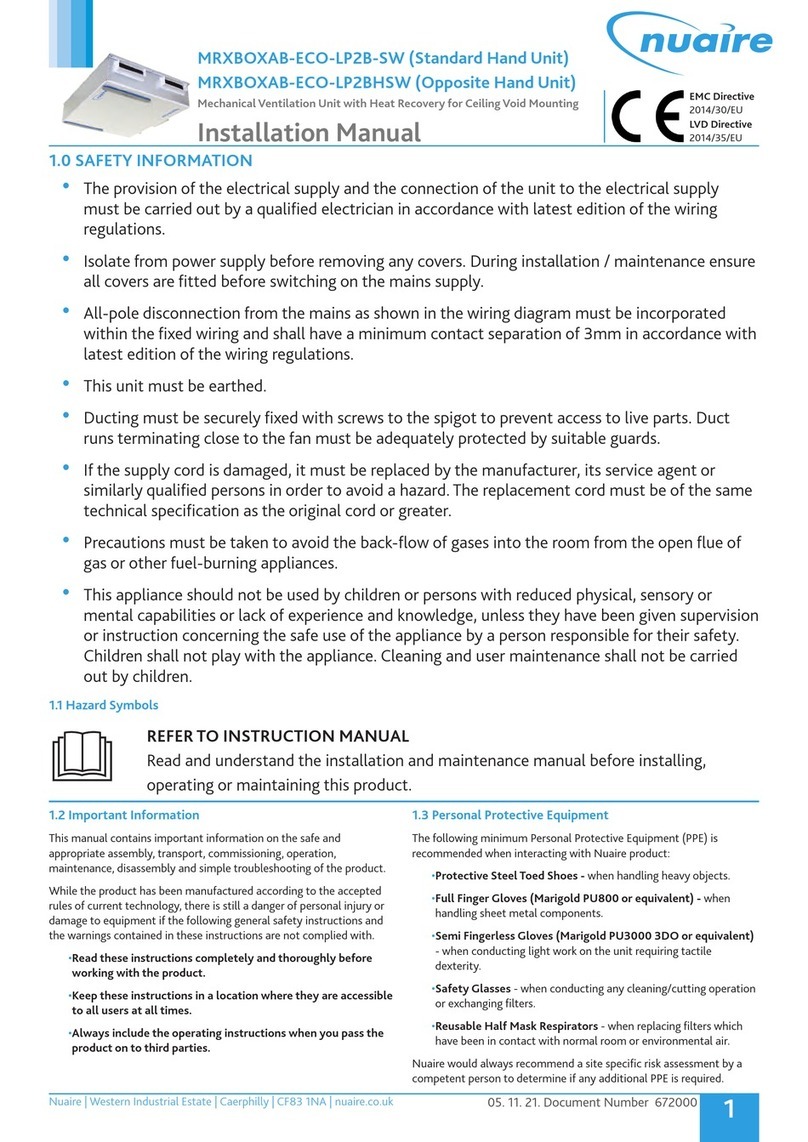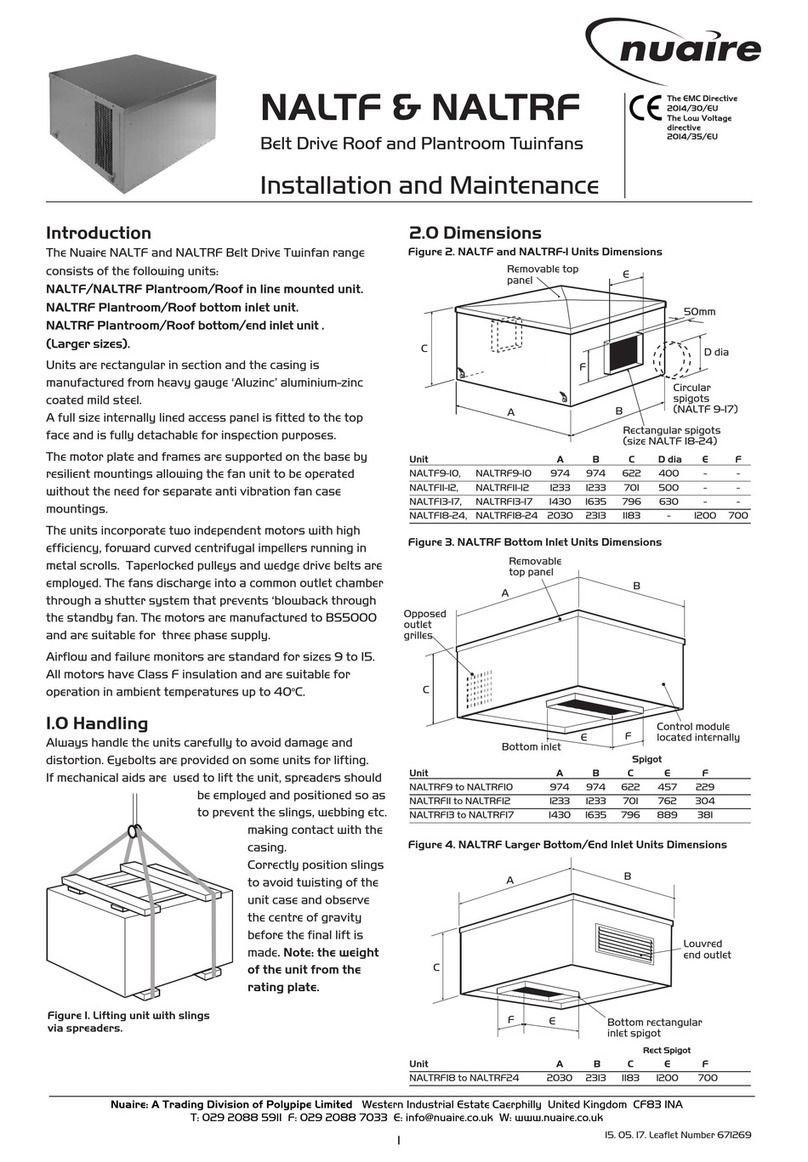Installation and Maintenance Low Energy Positive Input Ventilation Unit
6.0 Fitting the Main Fan Unit
The main fan unit is supplied with eyelets for suspension between
the roof trusses. It is the responsibility of the installer to supply and
fit suitable hanging brackets/wires (See Figure 5).
Install the unit in a position that ensures that all ducting takes the
least complex route.
The main fan unit should be positioned to ease maintenance. Please
note that a clear distance of 5 mm should be available above the
unit to allow access for maintenance.
The fan unit can also be mounted directly onto the roof joists using
an AV mounting kit available from Nuaire (Part No. 771393).
Screw the battens (not supplied), to the unit via the 5mm dia. holes
in the base under the filters, then lower complete onto the joists.
(See Figure 6).
Mark and drill the 12mm dia. clearance holes required in the ends of
the battens and place anti-vibration mounts above and below each
batten fixing point. Using the four large screws and special
washers, fix the unit to the joists.
Do not over tighten fixings. The distance from the top washer to
the joist when installed must not be less than 50mm.
7.0 Main fan unit air outlet connection
The main fan single air outlet spigot should be connected to the
diffuser spigot using a length of 2 mm diameter insulated
ducting and dynotie connector, both supplied by the installer.
.0 Main fan units air inlet and
associated sensor connections
As explained previously the unit is capable of drawing in external air
from different roof locations via three air inlet spigots each fitted
with their own low energy open/close damper. Air inlet locations
may include the following:
1. A portion of the roof tiles/slates on a southerly facing
roof (using them to heat or cool the outside air) using felt
(or breather membrane fitted in a similar way) spacers, a
specially created insulated plenum and insulated ducting all
supplied by the installer, (see .1).
2. The loft space at high level through uninsulated ducting
supplied by the installer, (see .2).
3. Depending on the property, ONE of the following options:
a) The soffit through a grille and ducting supplied by
the installer, (see .3).
b) or wall grille and ducting supplied by the installer, (see .4).
c) or roof tile vents by others and ducting supplied by
the installer, (see .5).
The following installation materials, not supplied with the
unit, can be purchased separately by the installer direct
from Nuaire Home Ventilation, Tel: 0 705 002555
Part No Description
190554 5 m by 1. 5m roll of foil backed bubble wrap
insulation. Type as manufactured by Encon
Insulation or equivelant. This is used to create
the plenum (See 8.1) to the underside of the rafters
and should be sufficient for 3 average plenum
installations.
011694 Galvanised steel felt spacers.
For use when plenum created (See 8.1).
Approximately 2 are required per installation.
011231 2 mm dia. spigot with venturi for connecting
duct to plenum (See 8.1).
140452 6 mm long foam wedges, 125 x 1 x 16 mm
used to seal the plenum chamber (See 8.1).
Approximately 18 are required per installation.
190553 45m long roll of aluminium foil tape used to
seal the plenum chamber (See 8.1).
Should be sufficient for 3 average installations.
PVC 933WH 3m length of 222mm x 9 mm flexible PVC ducting
for use on soffit inlets (See 8.3). This length
should be sufficient for 3 average installations.
51 920 128mm x 26 mm soffit grille (See 8.3).
FDC 200 2 mm duct connector for connecting 222 x 9
flexible duct to 2 dia. insulated duct (See 8.3).
FB250 199 x 215 x 2 mm white plastic wall grille (See 8.4).
GB250-T200 15 mm dia. pipe for wall grille (See 8.4).
541044 Dynotie Zip ties, used for connecting 2 mm
ducting to spigots. 8 off should be sufficient
for all types of installation.
FLDI 200 5m length of 2 mm dia. insulated ducting.
FLD 200 5m length of 2 mm dia. un-insulated ducting.
011740 2 mm dia. outlet spigot.
For use with “Fireblock” (See figure 4).
771393 AV mounting kit (See figure 6).
Please note that Nuaire do not supply any timber for the AV
mounts or the installation of the plenum to the rear of the rafters.
Typical installation details of each of the aforementioned air inlet
arrangements using the material above are detailed on the
following page. The installer may use alternative materials to
those above. In these circumstances Nuaire cannot take
responsibility for their suitability.
Figure 6. Fan unit shown mounted on roof joists using AV mounts.
Figure 5. Fan unit shown suspended.
3Leaflet Number 671346 October 2 6
min.
